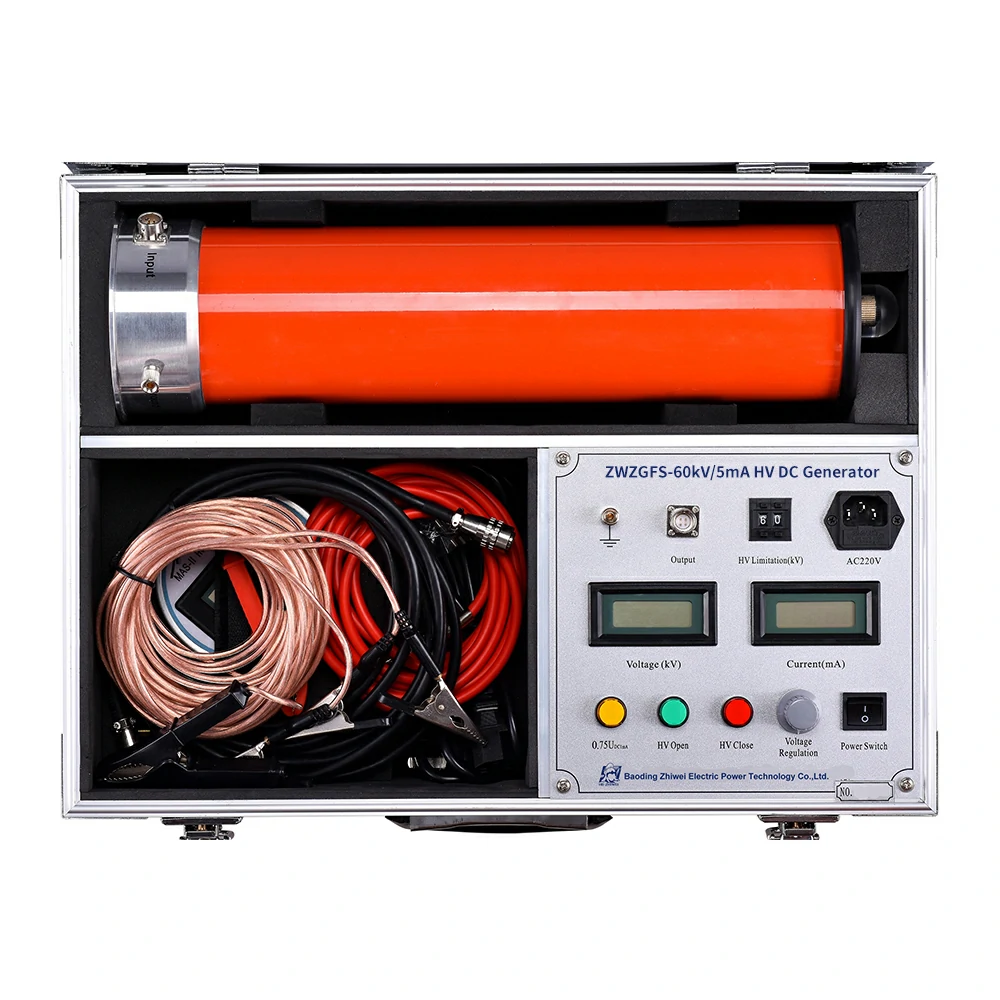DC testers, also known as DC hipot testers or DC high-potential testers, are versatile instruments used to perform high-voltage insulation testing on electrical components and systems. These testers apply a high DC voltage to the insulation under test to assess its integrity and detect potential faults or weaknesses.
Here are some types of faults that can be detected using a DC tester:
- Insulation Breakdown: DC testers can detect insulation breakdowns or dielectric failures within electrical insulation systems. When the applied DC voltage exceeds the insulation’s dielectric strength, it can cause a breakdown or flashover, indicating a fault in the insulation.
- Partial Discharge (PD): Partial discharge is a localized breakdown of insulation that occurs when the insulation is subjected to high electric field stress. DC testers can detect partial discharge activity by monitoring the leakage current or observing characteristic signals generated by PD events. PD is an early indicator of insulation degradation and can lead to insulation failure if left unaddressed.
- Contaminants or Moisture: DC testers can identify insulation faults caused by contaminants, such as dust, dirt, moisture, or conducting particles, that may degrade the insulation’s dielectric properties. These contaminants can create weak points in the insulation and lead to insulation breakdown or reduced insulation resistance.
- Void or Delamination: DC testers can detect voids or delaminations within insulation materials, such as air gaps or separation between layers. These defects can compromise the insulation’s integrity and increase the risk of electrical breakdown under high voltage stress.
- Cracks or Damage: DC testers can identify cracks, fractures, or physical damage to insulation materials that may weaken the insulation and reduce its ability to withstand voltage stress. Cracks can provide paths for electrical arcing or breakdown, leading to insulation failure.
- Aging or Degradation: DC testers can assess the condition of insulation materials over time and detect signs of aging, degradation, or deterioration. Insulation materials may degrade due to factors such as thermal stress, mechanical stress, chemical exposure, or environmental conditions, leading to reduced dielectric strength and increased risk of insulation failure.
- Poor Joint or Connection: DC testers can detect insulation faults associated with poor joints, connections, or terminations in electrical systems. High-voltage stress at joints or terminations can cause localized breakdowns or insulation failures, compromising the overall integrity of the electrical system.
Overall, DC testers are valuable tools for assessing the insulation quality, identifying potential faults or weaknesses, and ensuring the reliability and safety of electrical components and systems. By detecting insulation faults early, DC testers help prevent costly downtime, equipment damage, and safety hazards associated with insulation failure.

